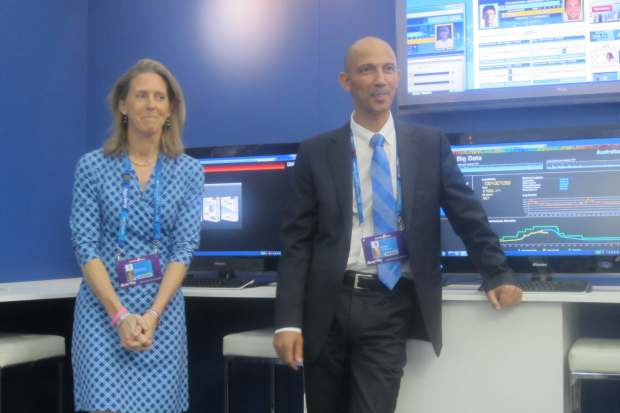Australian Open uses social media for cloud intelligence

At this year's Australian Open, IBM is teaming social media with data analytics to scale Tennis Australia's cloud infrastructure accordingly, to ensure the tournament's official website doesn't buckle during peak traffic periods.

2013 marks IBM's 20th year as the technology sponsor for the Australian Open. Once a year, for two weeks, the Australian Open website is pounded by a flood of traffic as people flock online to check match scores and player statistics, as well as tournament information. It is paramount then that Tennis Australia ramps up capacity for the cloud infrastructure that supports the website during times of high demand.
The Australian Open website and its content are hosted on a private cloud located in three IBM datacentres located in the US. This year, the vendor has introduced predictive cloud provisioning technology that can automatically scale compute capacity up or down based on a number of factors, including social media sentiment.
The technology takes data from analytics software and natural language processing (NLP) to gauge public opinion on different players from social media portals, such as Facebook and Twitter, as well as from news sites and blogs.
Combining that big data with the tournament's schedule of play, tennis player popularity, and historical data logs, IBM's data analytics software then determines when demand will spike on the Australian Open website. The cloud can then be automatically ramped up or down depending on the predicted demand.
"All the data, used properly and with the proper analytics behind it, provides business insights," Tennis Australia CIO Samir Mahir said. "What it means for us is we can be better prepared for peak traffic.”
"At least, there will be automation behind it so we can prepare for high peaks."
The Australian Open is the first Grand Slam tournament to employ this predictive cloud provisioning technology.
The buzz generated for specific players, such as Maria Sharapova and Roger Federer, in the social media sphere is also being used for the Australian Open Social Leaderboard, another new addition to the tournament this year. The leader board can be viewed on the website and show which players the public views favourably based on social media data.
But behind the scenes, IBM is taking that data to develop its Australian Open Social Sentiment Index, which tries to pull in geographical information from social media sources. IBM also did the same thing for other events, such as the Oscars.
"It's more complicated than you'd think to figure out positive and negative sentiment," said Elizabeth O'Brien, IBM sponsorship strategy lead. "You have to understand the language, slang, and so on.”
"It seems like a very simple thing, but to automate it takes a lot."
She said that despite the challenges, measuring social sentiment is something IBM is passionate about and will continue to work on. The solutions that IBM provide to the Australian Open aren't tennis specific and have been used by real businesses.
"At IBM, we love the Australian Open and we love tennis, but we really are in business for businesses," O'Brien said. "So for us, the same technology we use for everything here are things we bring to our business clients."
Social sentiment metrics are shared with all the Tennis Australia business units, including the marketing team, and will help with the planning of next year's event.
As well as serving fans, Tennis Australia also has to cater to the needs of journalists that pour in from all over the world to cover the event. At the Australian Open media centre, there are around 300 IPTV-based workstations running "AO Vision". This service aggregates video feeds from each tennis court and allows journalists to watch replays on demand.
AO Vision is useful for the tennis players as well. In previous years, online match analysis, which comes from AO Vision data, were packaged up and given to players after their matches. This year, the analysis is available on demand online and is integrated with AO Vision.
This means that Tennis Australia has to host all that data and video. As a result, it has had to ramp up its storage infrastructure in the back-end using IBM hardware.
"We have 200TB available right now," Mahir said. "Last year, we used almost 50TB, and we're hoping the 200TB will help us for at least the next two years."
Spandas Lui attended the Australian Open as a guest of IBM